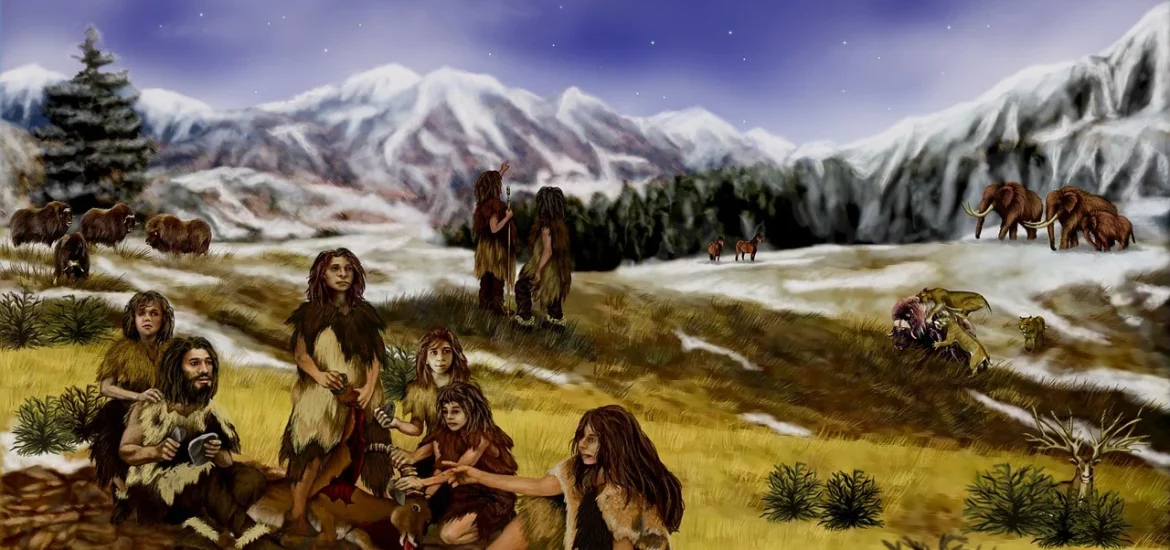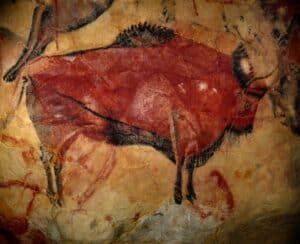Israeli scientists wanted to answer a question: What caused the disappearance of the larger animals from prehistoric human diets over time?

We’ve been hunting animals into extinction for 1.5 million years
Photo: Pixabay
Humans have had a impact on animal extinctions far longer than commonly thought and our ancestors were hunting species of megafauna into extinction as far back in time as 1.5 million years ago.
This is according to a team of scientists at Tel Aviv University in Israel who examined fossil records and argue in a study that prehistoric human hunters tended to prefer to target the largest prey animals available because these animals provided the most meat after being killed.
After a comprehensive analysis of data on animal bones collected from dozens of prehistoric sites in and around Israel, the researchers found a continual decline in the size of game animals hunted by early humans as their main food source ranging from giant elephants 1.5 million years ago all the way to gazelles around 10,000 years ago.
There is more: it was only after animals larger than deer had been hunted into extinction by the latter date that people in the so-called Fertile Crescent in the Middle East began to turn to farming and domesticating animals, likely in order to try and make up for the shortfall in available big game.
Scientists have long known that large animals such as mammoths disappeared over time from the fossil record, but a general hypthesis attributed this to changes in the climate.
Members of the Israeli team posit a new reason for these extinctions while at the same time they have also sought to answer another question: what drove cultural changes in prehistoric human populations as they devised ever more sophisticated hunting tools until they eventually turned from hunting and gathering to settled farming and animal husbandry.
“In light of previous studies, our team proposed an original hypothesis that links the two questions: We think that large animals went extinct due to overhunting by humans, and that the change in diet and the need to hunt progressively smaller animals may have propelled the changes in humankind,” says Ran Barkai, a professor of prehistoric archaeology at Tel Aviv University.
The researchers focused on the Southern Levant (which encompasses Israel, the Palestinian territories, Jordan, Lebanon and parts of Syria) because the region is an “archaeological laboratory” on account of the density and continuity of prehistoric findings spanning a long period of time over a relatively small area.
As a result it is “a unique database unavailable anywhere else in the world,” notes Jacob Dembitzer, a scholar at Tel Aviv University. “Excavations, which began 150 years ago, have produced evidence for the presence of humans, beginning with Homo erectus who arrived 1.5 million years ago, through the Neandertals who lived here from an unknown time until they disappeared about 45,000 years ago, to modern humans (namely, ourselves) who came from Africa in several waves, starting around 180,000 years ago,” Dembitzer says.

Excavations conducted at 58 prehistoric sites since 1932 have provided a unique sequence of findings from different types of human settlements in the region over 1.5 million years. At some sites various human groups lived separated by tens of thousands of years, their onetime presence now apparent from different layers of fossils. In all, thousands of bones belonging to 83 animal species have been unearthed and identified.
“Our study tracked changes at a much higher resolution over a considerably longer period of time compared to previous research. The results were illuminating: we found a continual, and very significant, decline in the size of animals hunted by humans over 1.5 million years,” explains Shai Meiri, a professor at the university’s School of Zoology.
“For example, a third of the bones left behind by Homo erectus at sites dated to about a million years ago, belonged to elephants that weighed up to 13 tons (more than twice the weight of the modern African elephant) and provided humans with 90% of their food. The mean weight of all animals hunted by humans at that time was 3 tons, and elephant bones were found at nearly all sites up to 500,000 years ago,” Meiri elucidates.
“Starting about 400,000 years ago, the humans who lived in our region (early ancestors of the Neandertals and Homo sapiens) appear to have hunted mainly deer, along with some larger animals weighing almost a ton, such as wild cattle and horses. Finally, in sites inhabited by modern humans, from about 50,000 to 10,000 years ago, approximately 70% of the bones belong to gazelles — an animal that weighs no more than 20-30kg. Other remains found at these later sites came mostly from fallow deer (about 20%), as well as smaller animals such as hares and turtles,” the scientist adds.
The findings posed a puzzle: What caused the disappearance of the larger animals from the area and human diets over time? Was it climate change, as a widely held theory has it, that drove them into extinction? Or was it something else?
To see if climate change was indeed to blame, the scientists collected climatic and environmental data for the entire period under study covering more than a dozen cycles of glacial and interglacial periods.
“This data included temperatures based on levels of the oxygen 18 isotope, and rainfall and vegetation evidenced by values of carbon 13 from the local Soreq Cave. A range of statistical analyses correlating between animal size and climate, precipitation, and environment, revealed that climate, and climate change, had little, if any, impact on animal extinction,” Dembitzer says.
The insight prompted the Israeli scientists to propose what Miki Ben-Dor, an expert at the Jacob M. Alkow Department of Archaeology and Ancient Near Eastern Cultures, calls “a fascinating hypothesis on the development of humankind.”
Namely this: “Humans always preferred to hunt the largest animals available in their environment until these became very rare or extinct, forcing the prehistoric hunters to seek the next in size,” Ben-Dor says. “As a result, to obtain the same amount of food, every human species appearing in the Southern Levant was compelled to hunt smaller animals than its predecessor, and consequently had to develop more advanced and effective technologies. Thus, for example, while spears were sufficient for Homo erectus to kill elephants at close range, modern humans developed the bow and arrow to kill fast-running gazelles from a distance.”
Nor is this hypothesis limited to the Levant alone. Rather, the same trends appear to have played out across much of the planet, the scientists say.
“We believe that our model is relevant to human cultures everywhere. Moreover, for the first time, we argue that the driving force behind the constant improvement in human technology is the continual decline in the size of game. Ultimately, it may well be that 10,000 years ago in the Southern Levant, animals became too small or too rare to provide humans with sufficient food, and this could be related to the advent of agriculture,” Prof. Barkai observes.
“In addition, we confirmed the hypothesis that the extinction of large animals was caused by humans — who time and time again destroyed their own livelihood through overhunting. We may therefore conclude that humans have always ravaged their environment but were usually clever enough to find solutions for the problems they had created — from the bow and arrow to the agricultural revolution. The environment, however, always paid a devastating price,” the scientist adds.








